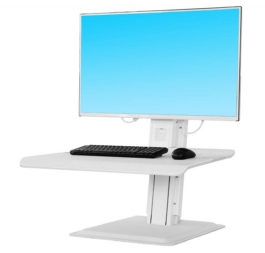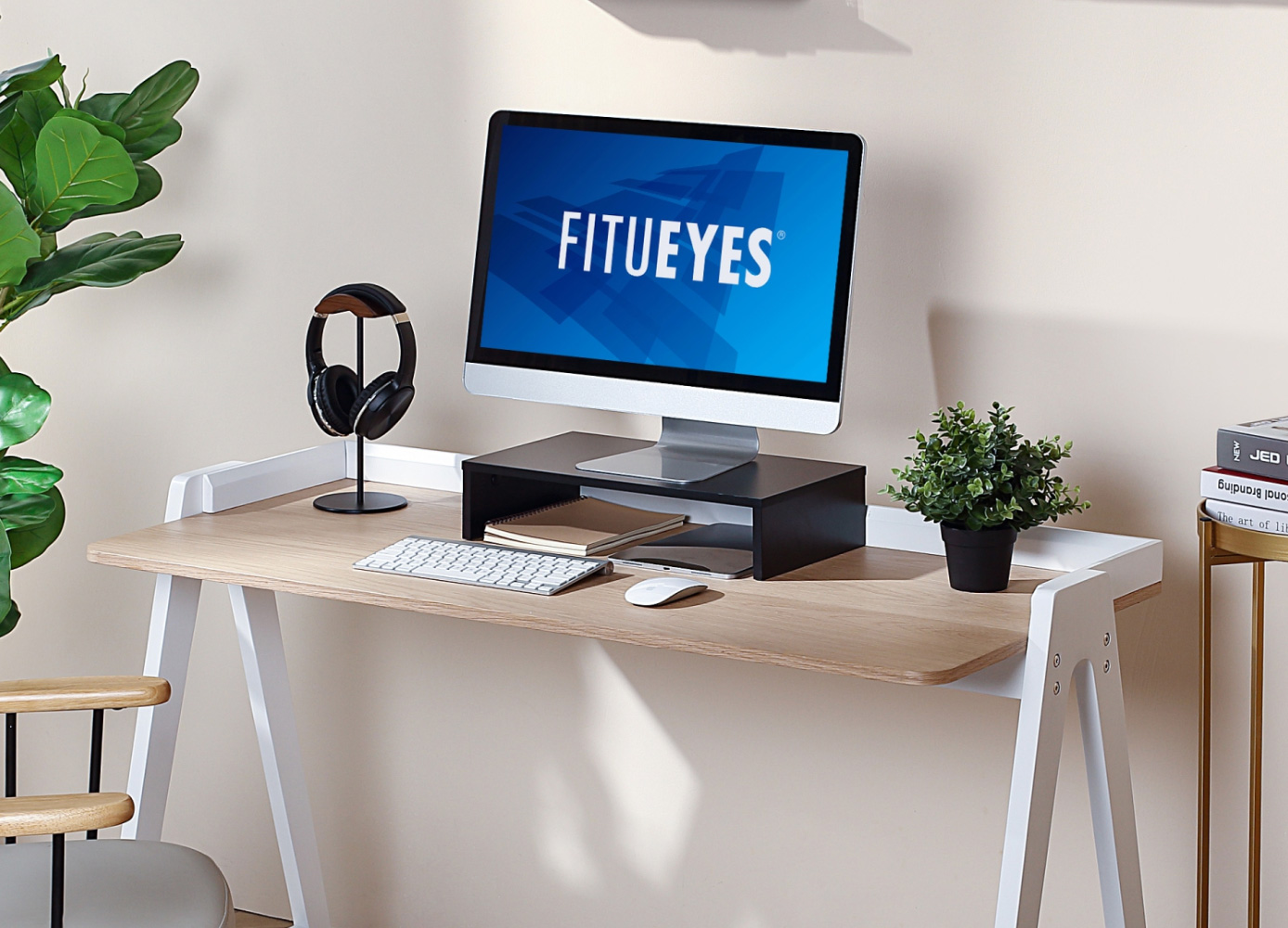
If you find yourself working long hours in front of computer monitors, creating an ergonomic workspace is paramount. The prolonged exposure can lead to discomfort, strain, and health complications if your workspace isn’t set up correctly. However, taking a moment to assess and make mindful adjustments to your setup can make a world of a difference. Explore actionable steps to help you create a workspace that prioritizes both comfort and productivity and enhances your overall experience in front of the screen.
Why monitor ergonomics matter
Ergonomics is the science of fitting a job or task to the person. With regards to monitor use, poor ergonomics can result in eye strain, headaches, neck, shoulder, and back pain. And this doesn’t just affect your health; it can also decrease your efficiency at work. Ensuring your workspace is ergonomically sound can greatly improve your well-being and productivity in the short and long term.
Understanding the ideal monitor placement: Key factors to consider
To curate an ergonomic workspace, understanding the fundamental factors that contribute to comfort and well-being is key. And when it comes to ergonomics, along with seated posture, monitor placement takes center stage. The right position can be the difference between a productive, comfortable day and one plagued by discomfort. While the exact positioning can be a personal preference, there are universal factors to consider to ensure the ideal placement:

- Distance from the user: Too close, and you may strain your eyes; too far, and you might find yourself leaning in, straining your neck and back. It’s essential to find a balance where the text and images are clear on the monitor without causing any physical discomfort.
- Height in relation to eye level: If a monitor is too low, you’ll tilt your head down; if it’s too high, you’ll look up, both potentially leading to neck strain. Ideally, the top of the screen should be at, or slightly below, eye level, allowing the eyes to gaze slightly downward.
- Tilt and angle: Depending on your seating and the height of the monitor, a slight tilt can make viewing more comfortable. A monitor that can tilt and swivel offers flexibility to adjust as per individual needs.
- Surrounding environment: Think about where your monitor is in relation to windows or light sources. Glare or reflections can cause eye strain, so considering the ambient light can influence monitor placement.
- Flexibility and adjustability: As tasks or conditions change, having the ability to easily adjust your monitor’s position can be a boon. Adjustable monitor arms or stands can offer this flexibility, ensuring comfort in various scenarios, such as if you decide to stand for a time.
How to ergonomically set up your monitor

Now that you know which factors are important for an ergonomic monitor setup, here’s how to set up your monitor for comfort and productivity—step-by-step.
1. Determine the right distance
Start by sitting comfortably in your chair, facing your desk. Extend your arm and try to touch the screen. The ideal position is where the tips of your fingers just touch the monitor. This typically means a distance of about 50-100 cm from the eyes.
2. Adjust monitor height
The top of the screen should align with your eye level or slightly below it. If the monitor is too low, use a stand or riser. Alternatively, stack sturdy books or materials under the monitor to elevate it. The aim is to keep your neck in a neutral position, so you’re looking slightly downward at about a 10-15-degree angle.
3. Tilt and angle the monitor
The monitor should be tilted back by approximately 10-20 degrees, ensuring the screen faces you directly. If you’re facing windows, position your monitor perpendicular to them to reduce glare. If unavoidable, invest in blinds or shades.
4. Dual monitors setup
If you’re using two or more screens, ensure that the primary screen (where you spend most of your time) is directly in front of you. The secondary screens should be immediately next to the primary one, at the same height and angle. When moving your gaze between monitors, you should only have to move your eyes with minimal head movement.
5. Regularly test and adjust
Spend a few days with your new setup. If you notice any discomfort, tweak the monitor’s position. Consider setting up reminders to check your posture throughout the day. Over time, maintaining the right posture will become second nature.
6. Adjusting screen settings
Beyond physical placement, the settings of your monitor play a role in ergonomics. Adjust the brightness and contrast so it’s in harmony with your surroundings. The screen shouldn’t act as a light source nor be too dim. Proper monitor calibration can make a world of difference. The text size and contrast should be set such that you can read comfortably. And don’t forget, using blue light filters or software that adjusts the colour temperature can be an added bonus for your eyes.
The role of lighting in reducing eye strain
Lighting is often an overlooked aspect of workspace ergonomics. Having the right balance is crucial for reducing eye fatigue. Ideally, your workspace should be well-lit with natural light. However, if this isn’t possible, ensure artificial lighting is bright enough without causing screen glare. Make sure to position your monitor to avoid reflections from overhead lights or windows. The goal is to have consistent, diffused lighting throughout your workspace.
Additional tips for a comfortable and productive workspace

While the placement and settings of your monitor are pivotal, the overall workspace environment plays an equally significant role in your comfort and productivity. The little details matter, and when combined, they shape an ergonomic haven that promotes health and encourages efficient work routines. Here are a few more tips to consider:
- Chair and posture: Invest in a good ergonomic chair. Not only will it support your back, but it will also ensure your feet are flat on the ground, with your knees at a 90-degree angle.
- Regular breaks: Follow the 20-20-20 rule; every 20 minutes, look at something 20 feet away for at least 20 seconds. It’s a simple practice, but it’s a refreshing break for your eyes.
- Workspace organization: Keep frequently used items within arm’s reach. This minimizes strain and helps maintain a streamlined work process.
Embracing ergonomics: The key to a healthier, more productive workspace
An ergonomically sound workspace not only boosts productivity but also safeguards your health in the long run. These small adjustments are often neglected, but over time, they compound to either benefit or detriment your well-being. By understanding and implementing proper computer monitor positioning and workspace habits, you can ensure you are working in a manner that is harmonious with your health. Adjust, adapt, and make your workspace truly your own.
This article was drafted using AI technology and then reviewed, fact-checked, and revised by a member of our editorial team.




